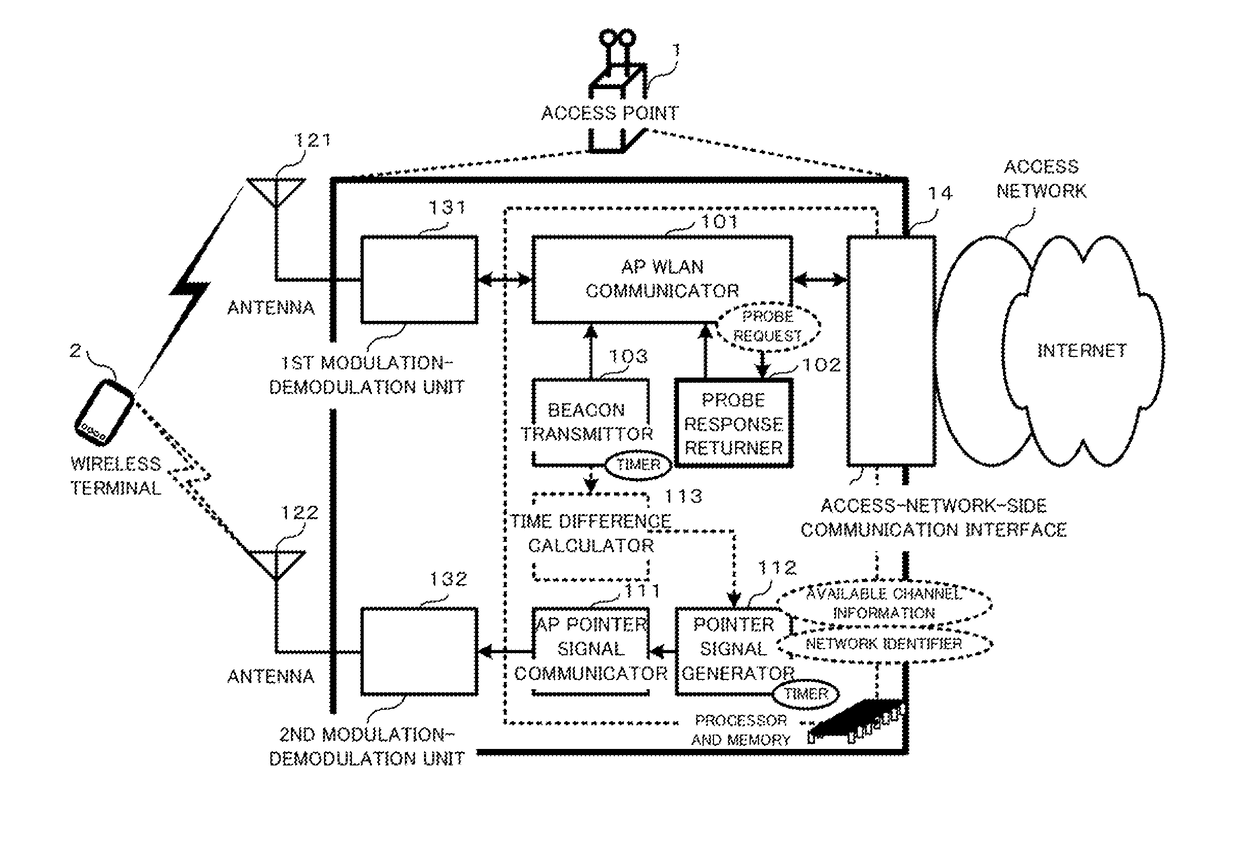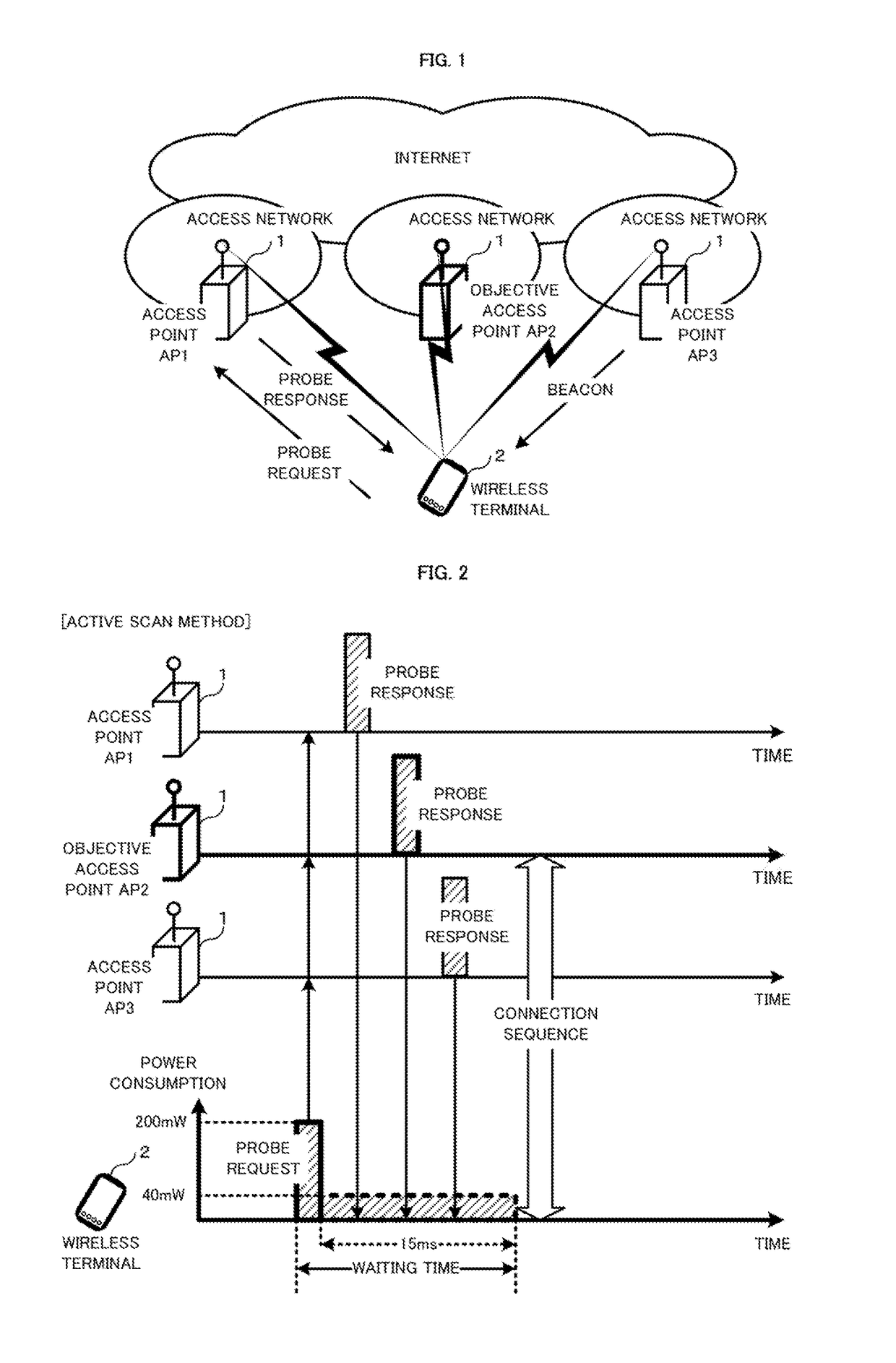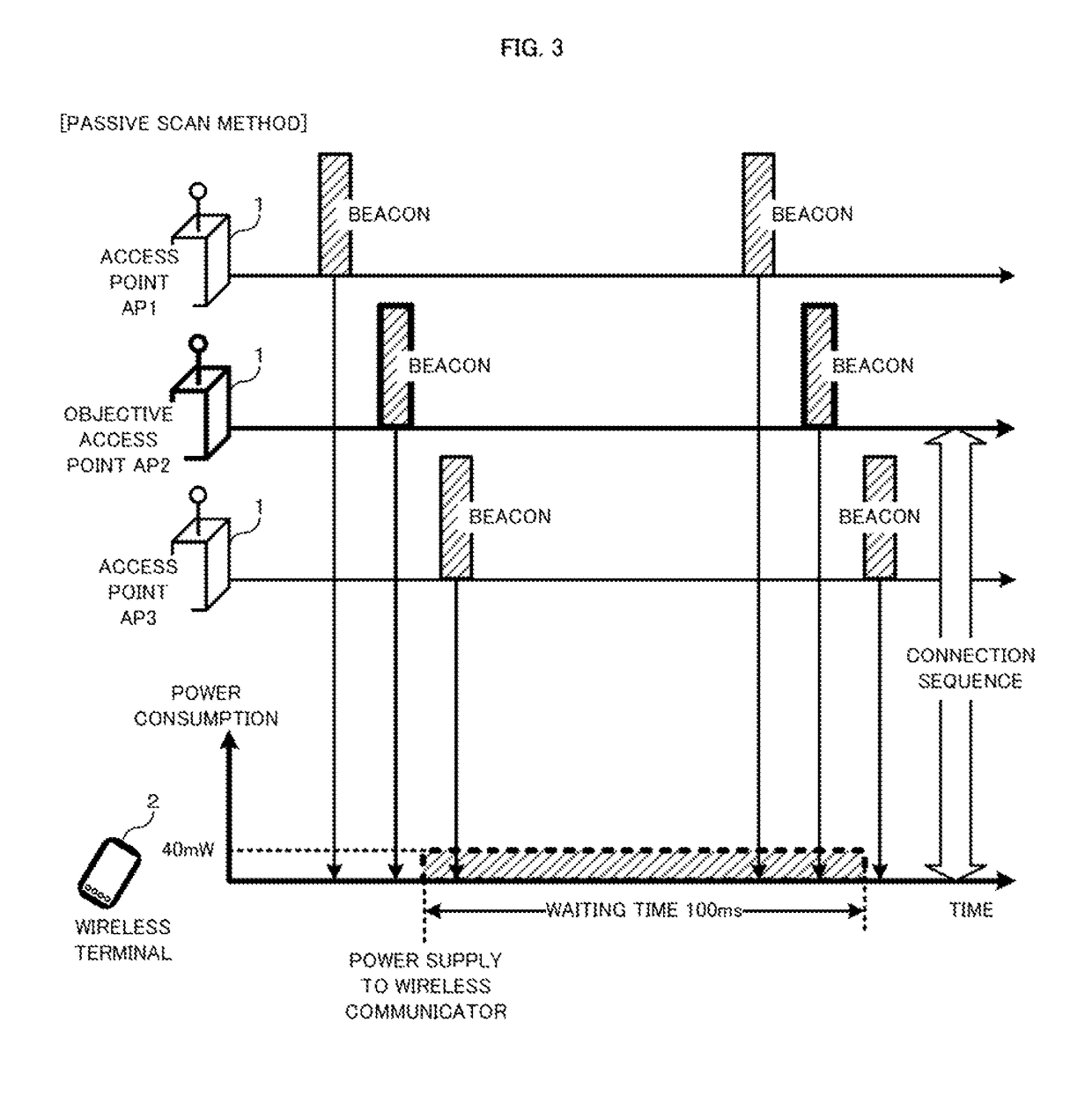System, program and method where wireless terminal discovers access point
a wireless terminal and access point technology, applied in the field of communication sequence technology, can solve the problems of consuming more electric power of the wireless terminal, requiring a comparatively long waiting time for the beacon to be received, and the active scan method achieving a comparatively short waiting time for the response of the probe, so as to achieve a small amount of consumption energy and short waiting time
- Summary
- Abstract
- Description
- Claims
- Application Information
AI Technical Summary
Benefits of technology
Problems solved by technology
Method used
Image
Examples
first embodiment
[0082]FIG. 5 is a functional block diagram illustrating an access point according to the present invention.
[0083]The access point 1 is constructed to include, as hardware, two antennas 121 and 122 that communicate with wireless terminal(s) 2, the first modulation-demodulation unit 131 connected with the antenna 121, the second modulation-demodulation unit 132 connected with the antenna 122, and an access-network-side communication interface 14. The antenna 121 and the first modulation-demodulation unit 131 support the communication in the first frequency band, being based on a communication method prescribed in the IEEE802.11 at least. While, the antenna 122 and the second modulation-demodulation unit 132 support the communication in the second frequency band, whether or not being based on a communication method prescribed in the IEEE802.11. Note that the first modulation-demodulation unit 131 and the second modulation-demodulation unit 132 may share a single antenna, utilizing each...
second embodiment
[0091]FIG. 6 is a functional block diagram illustrating an access point according to the present invention.
[0092]According to FIG. 6, an access point 1 uses two frequency bands in a WLAN unlike the access point shown in FIG. 5. The first frequency band is a 5 GHz band (or 2.4 GHz) band prescribed in the IEEE802.11 standard, and the second frequency hand is a 2.4 GHz band (or 5 GHz) hand prescribed in the IEEE802.11 standard. Therefore, transmitting a pointer signal does not require any use of another radio carrier. As shown in FIG. 6, the pointer signal generator 112 transmits a pointer signal to wireless terminal(s) 2 through the second AP WLAN communicator. Of course, the pointer signal generator 112 may transmit a pointer signal to wireless terminal(s) 2 by using another communication method for transmitting and receiving user data.
[0093]In a WLAN, Generally, there is much use of the 2.4 GHz band, in which access points and wireless terminals interfere much with one another. Ther...
PUM
 Login to View More
Login to View More Abstract
Description
Claims
Application Information
 Login to View More
Login to View More - R&D
- Intellectual Property
- Life Sciences
- Materials
- Tech Scout
- Unparalleled Data Quality
- Higher Quality Content
- 60% Fewer Hallucinations
Browse by: Latest US Patents, China's latest patents, Technical Efficacy Thesaurus, Application Domain, Technology Topic, Popular Technical Reports.
© 2025 PatSnap. All rights reserved.Legal|Privacy policy|Modern Slavery Act Transparency Statement|Sitemap|About US| Contact US: help@patsnap.com



